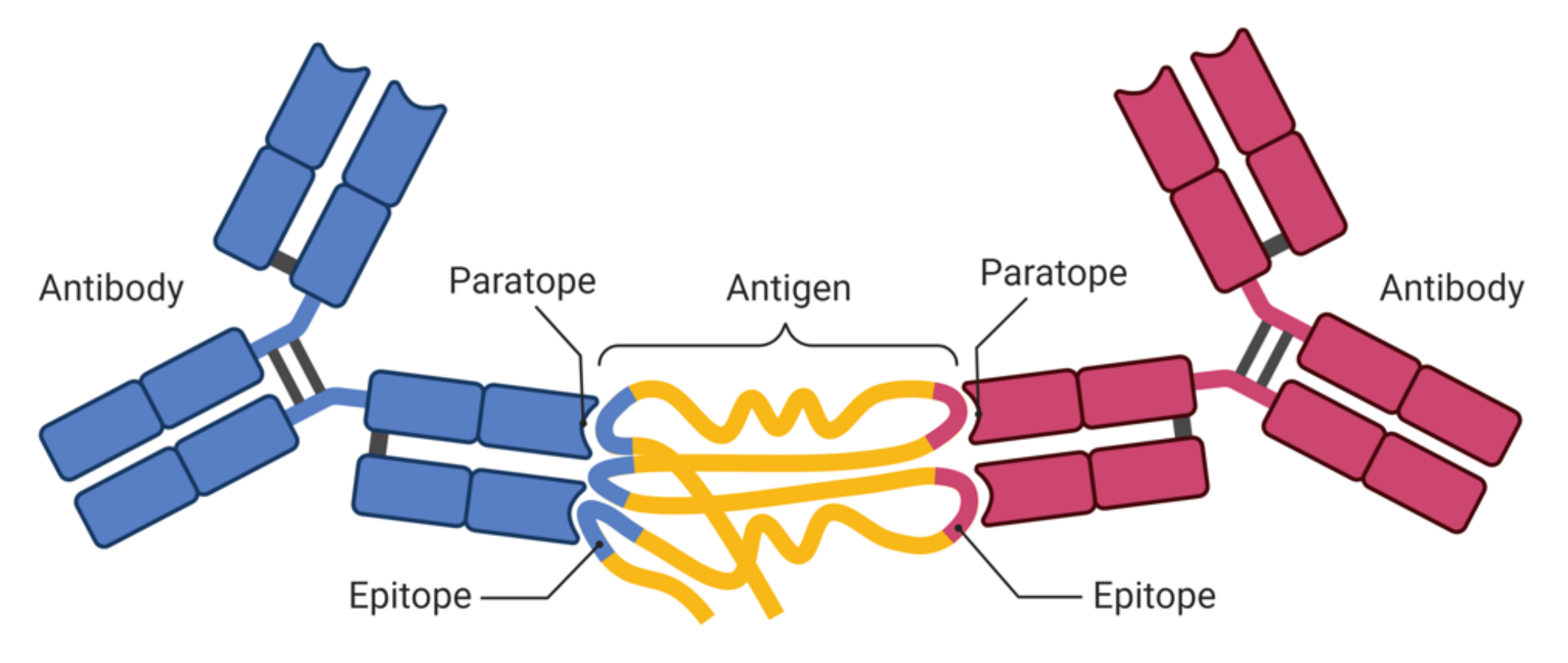Which of the Following Is the Best Definition of Epitope
A specific regions on antigens that interact with T-cell receptors. Denominator indicates those for non-epitope unit patches.

Bepitbr T B Reciprocity Enhances B Cell Epitope Prediction Sciencedirect
Although epitopes are usually non-self proteins sequences derived from.

. B Lymphocytes that can recognize and react to a specific antigen proliferate. If they are epitope and receptor fit together like two. In general an epitope is approximately five or six amino acids in length.
The small site on an antigen to which a complementary antibody may specifically bind is called an epitope or antigenic determinant. Called also determinant antigenic determinant. The part of an antibody that binds to the epitope is called a paratope.
B-cell epitope prediction using support vector machine tool BEST is sequence-based tool designed for prediction of both linear and conformational epitopes from full antigen sequence. 4 Which of the following is the best definition of epitope. Which of the following is the best definition of epitope.
C A single lymphocyte develops the ability to recognize multiple antigens. B Lymphocytes that can recognize. Instead it is binding to a to a segment of that protein known as an epitope.
Epitope An epitope also known as antigenic determinant is the part of an antigen that is recognized by an antibody B-cell receptor or T-cell receptor. As an alternative choice for epitope mapping with lower but acceptable precision mimotope analysis is becoming to be an increasingly popular method for its cheapness and quickness 19 20. Epitope spreading is thought by many researchers to drive the progression of autoimmune diseases and to contribute to recurrent flare-ups.
This is usually one to six monosaccharides or five to eight amino acid residues on the surface of the antigen. Prediction is based on averaging of selected scores sequence conservation similarity to experimentally validated B-cell epitopes predicted secondary structure. An epitope is also called an antigenic.
C specific regions on antigens that interact with haptens. An epitope and the action by which it bonds to antibodies plays a vital role in the detection of drug metabolites in immunoassay drug screening. An epitope refers to the specific target against which an individual antibody binds.
D A B lymphocyte is selected to become a T cytotoxic cell. Epitope also called antigenic determinant portion of a foreign protein or antigen that is capable of stimulating an immune response. Which of the following statements best describes the process of clonal selection.
A specific regions on antigens that interact with T-cell receptors B specific regions on antigens that interact with haptens C specific regions on antigens that interact with antibodies D specific regions on antigens that interact with MHC class molecules. 1 Which of the following is the best definition of epitope. When an antibody binds to a protein it isnt binding to the entire full-length protein.
The epitope is the specific piece of the antigen to which an antibody binds. A An antigen directly activates B- and T-cell clones. An epitope also known as antigenic determinant is the part of an antigen that is recognized by the immune system specifically by antibodies B cells or T cells.
Where f i is the number of unit patch pattern i in epitope unit patches while Σ i f i is the number of all epitope patches. An epitope is the portion of an antigen to which the immune system specifically antibodies react to and bind with in order to complete the immune response. For a certain surface residue r the propensity score of it avg r is predominantly determined by its local neighboring environmentThus avg r is calculated as the averaged propensity indices of.
Binding between the receptor and epitope occurs only if their structures are complementary. A specific regions on antigens that interact with T-cell receptors B specific regions on antigens that. As introduced in Chapter 16 epitope spreading is the term describing the phenomenon in which the immune system expands its response beyond the immunodominant epitopes first recognized by T and B cells.
A specific regions on antigens that interact with T-cell receptors technically T-cell receptors recognize the epitope with MHC B specific regions on antigens that interact with MHC class moleculesMost specific however I will not expect you to know that much detail this semester. Which of the following is the best definition of epitope. A molecular region on the surface of an antigen capable of eliciting an immune response and of combining with the specific antibody produced by such a response.
In this study the epitope of metuximab was defined completely at the residue level using phage display and the following bioinformatics analysis. Generally an antigen has several or many different epitopes and reacts with many different antibodies an epitope is approximately five or six amino acids in length. B specific regions on antigens that interact with MHC class molecules.
An epitope is the part of the antigen that binds to a specific antigen receptor on the surface of a B cell.

Nnalign Ma Mhc Peptidome Deconvolution For Accurate Mhc Binding Motif Characterization And Improved T Cell Epitope Predictions Molecular Cellular Proteomics

Pathogens Free Full Text Machine Learning Techniques For The Prediction Of B Cell And T Cell Epitopes As Potential Vaccine Targets With A Specific Focus On Sars Cov 2 Pathogen A Review Html
Comments
Post a Comment